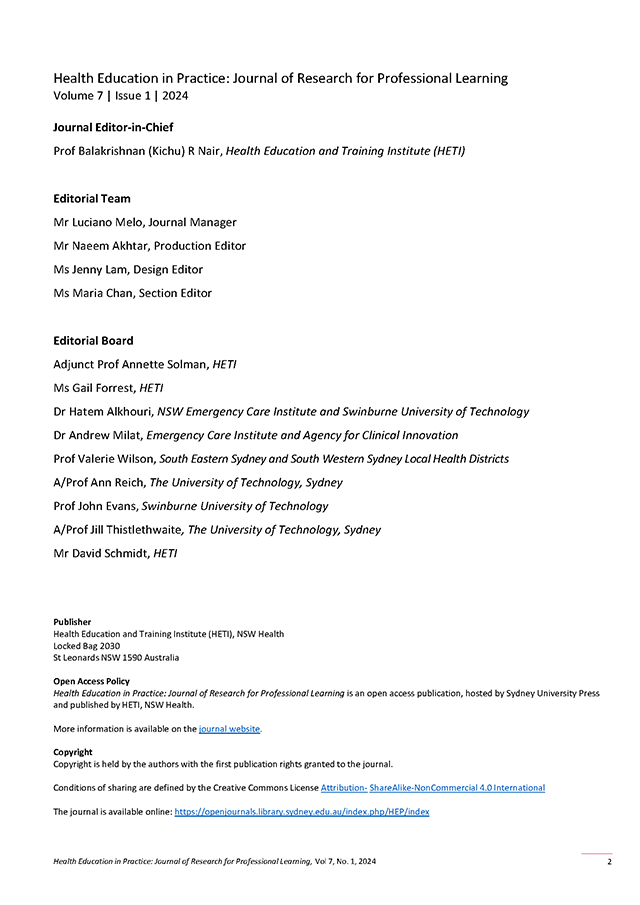An Education Model for Paediatric Palliative Care
Building capacity for equitable paediatric palliative care in regional, rural and remote areas.
DOI:
https://doi.org/10.33966/hepj.7.1.17855Abstract
Introduction: Meeting the palliative care needs of children and their families is complex and challenging. For countries such as Australia, whose relatively small paediatric palliative care population is dispersed across a very large geographical area, one challenge is maintaining a skilled workforce in regional, rural, and remote areas, where, when compared to major cities, there are fewer resources, and the workforce is often transient.
Methods: The Quality of Care Collaborative Australia (QuoCCA) Pop-up Model of Education was used to provide palliative care education to health professionals across three geographical locations and facilities, to facilitate a 2,500-km transfer of a child with complex palliative care needs from a tertiary hospital to the remote family home on Country.
Results: Each Pop-Up provided effective education to facilitate the successful transfer of the child to the next hospital location. Over 18 months, three Pop-Ups occurred. Relational learning and real-time problem solving enabled health professionals to build confidence and capacity to successfully transfer the child from the regional hospital to the remote family home.
Implications: The QuoCCA Education Pop-up Model is a feasible method to deliver timely access to speciality education. The model can be successfully applied in multiple settings.
Keywords: paediatric, palliative care, integrated health care delivery, learning, rural, education models.

